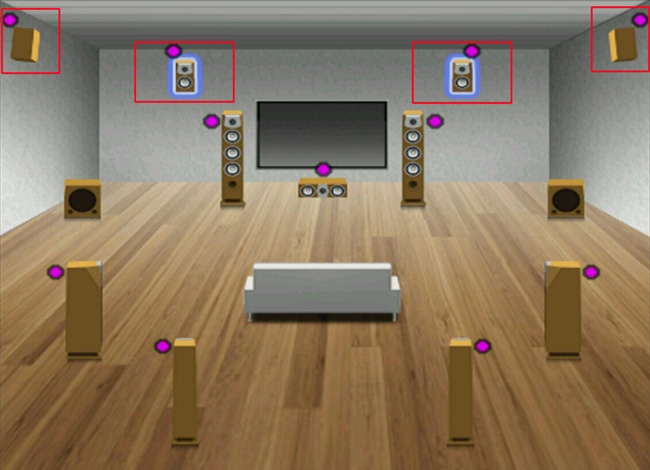
It maps the bed channels to screen channels or surround arrays, and positions objects within the room. The Dolby Atmos processor in the theater intelligently assigns each audio track. Dolby Atmos packages up to 128 audio tracks - a 9.1 bed and up to 118 audio objects. So a Dolby Atmos soundtrack also includes a more conventional channel-based "bed," together with the audio objects.
DOLBY ATMOS SPEAKER PLACEMENT MOVIE
Some elements of a movie soundtrack, however, still benefit from a channel-based approach - for instance, ambient effects and music backgrounds. Sounds can originate from a single speaker or sequence of speakers, or from any number of speakers simultaneously.Īudio objects empower filmmakers to focus on the story and put the sounds where they belong, rather than compromise the artistic impact to fit a fixed channel or zone. So you hear the roar of a plane flying overhead from above you, or a door closing to the left. The filmmaker decides exactly where the sound should come from and where it should move. Put all the objects together, and you'll feel like you're actually in the restaurant, not just watching a scene.Īny sound can be a single audio object, placed and moved independently anywhere in the theater. In Dolby Atmos, each of those sounds can be created as an independent entity - an audio object. And because there are no overhead speakers, the sounds cannot move above you. That's because channel-based sounds - particularly surround effects -have to be assigned to a general zone, not a specific location. With conventional surround sound, you'll get the ambience, but the voice and clink come from vague locations - if you can pick them out at all. Now you're watching that same restaurant scene in a movie. There's a general buzz of conversation and music all around, yet you can pick out an individual voice behind you or a clink of silverware from the terrace above you - and you can tell exactly where each sound is coming from. The improved speaker layout is a key to implementing the dramatic audio improvements of Dolby Atmos. In addition to the overhead speakers, Dolby Atmos typically adds more surround speakers and screen speakers.

In a Dolby Atmos theater, every speaker - as many as 64 total - is powered independently and gets its own separate audio feed. All speakers within a zone receive the same audio information. The surround channels are handled by wall-mounted arrays of speakers, divided acoustically into two or four zones.

The most immediately noticeable difference in a Dolby Atmos® system is the use of overhead speakers, but that's just part of the story.Ī typical surround sound system consists of left, center, and right discrete channels with the speakers behind the screen. The movie's sounds flow all around you to completely immerse you in the action, heightening the impact of the story and creating a powerfully moving cinema experience.įor information on installation requirements, check out the

The Dolby Atmos cinema processor then determines which of a cinema's huge array of front, back, side, and overhead speakers it will use to recreate this lifelike movement.Īs a result, a Dolby Atmos soundtrack brings alive the onscreen story as never before possible. These can be precisely placed and moved by the soundtrack creator anywhere in the cinema's three-dimensional space, though the artist can continue to use channel capabilities as desired. It enables artists to treat specific sounds as individual entities, called audio objects. In Dolby Atmos, by contrast, sound can be freed from channels. If one sound is emphasized in a traditional mix, another must be diminished. Further, sounds exist only as part of a channel mix. Traditional surround soundtracks confine all sounds to a small set of channels that can deliver sound to you from only a few perceived angles. Together, these completely change how soundtracks are created and heard. Dolby Atmos® creates powerful, moving audio by introducing two important concepts to cinema sound: audio objects and overhead speakers.


 0 kommentar(er)
0 kommentar(er)
